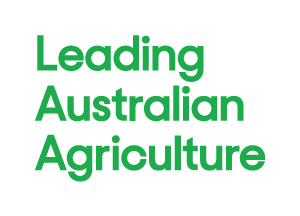The Federal Government’s decision to bring forward the floating carbon price by one year has been cautiously welcomed by the nation’s farmers – but their decision to offset the cost of doing so by slashing farm programs has been heavily criticised.
The Prime Minister has today confirmed that the carbon tax will be replaced by an emissions trading scheme, at a cost to the budget of $3.8 billion over the next four years, with this to be offset by cutting $356 million in funding from the Biodiversity Fund and Carbon Farming Futures, among other programs.
CEO of the National Farmers’ Federation (NFF), Matt Linnegar, said it was extremely disappointing that the Government had chosen to fund its new emissions trading scheme, aimed at reducing greenhouse gas emissions, by cutting funding to two important programs that help farmers store carbon and continue their work as Australia’s frontline environmentalists.
“Cutting the carbon tax is something the NFF had long advocated for, due to the additional and unnecessary costs it adds into Australian farm businesses. The early move to an emissions trading scheme will reduce these costs, because the current international carbon price is lower than the fixed price under the tax,” Mr Linnegar said.
“But the decision by the Government to offset the cost of moving to an emissions trading scheme by scrapping unallocated funds from the Biodiversity Fund and the Carbon Farming Futures program means they risk, once again, robbing Peter to pay Paul.
“The Carbon Farming Futures program delivers the science and extension to help farmers manage their land in way that reduces emissions and leads to enhanced productivity and sustainability. Today, the Government announced they are cutting the program funding by one third. Meanwhile the Biodiversity Fund helps farmers store carbon, enhance biodiversity and build greater environmental resilience – and its funding will be cut by close to a quarter.
“At this stage, it is unclear as to whether the earlier move to the emissions trading scheme will result in a better deal for the farm sector. The first question is, will the reduced cost burden to farmers from an earlier move to a floating price outweigh the benefit that farmers would have received under these two programs, should they have remained fully funded?
“Even if the answer to the first question is positive, the second question is what happens if the carbon price increases? In future years, the price of carbon is expected to rise in line with the world market and with it, so will farmers’ costs. With the move to the floating price, farmers will be able to purchase overseas credits, but at this stage, there is no opportunity for them to sell to the international market – this opportunity is potentially still many years away.
“Australian agriculture is often criticised for being a large emitter of greenhouse gases, but Australian farmers have actually led the nation in reducing emissions, by a massive 40 percent between 1990 and 2006.
“What we need from the Government now is an answer to our question re what this means for farmers. It is important that the benefits for farmers under the emission trading scheme outweigh the costs, including the program funding cuts. Otherwise, this move risks the Government delivering with one hand and taking away with the other,” Mr Linnegar said.





Add comment